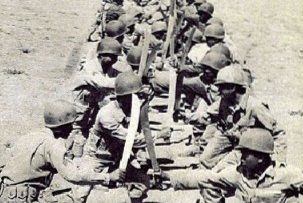Filipino knife fighting originated from an ancient blade culture. In the setting where it was originally practiced, every man carries a knife and with few exceptions all disputes were settled with both antagonists armed with blades. This fact agrees with some people’s observation that Filipino knife fighting operates mainly in a blade-to-blade or duelling mode.
Examining the nature of the original setting where Filipino knife fighting developed would explain the rationale behind its structure and techniques. The majority of Philippine knife fighting systems teach their practitioners to lead with the weapon hand. The reason for this is simple – a Filipino knife fighter would cut or stab any limbs that stick out. Carrying the blade in the lead hand allows a knife fighter to launch a counter slash or a counter stab quicker as compared to carrying it in the rear hand.
Out of its ancient setting, would the blade-to-blade mode of fighting be still useful in the modern world? The answer is yes, – in the battlefield. In war when it is a given that both parties were armed, the Filipino blade-to-blade techniques performed exemplary well as described in the following anecdote of the late largo mano Gran Maestro Leo Giron, a bemedalled soldier during World War II: “One time I got clipped with a bayonet. I blocked the samurai sword coming down toward my shoulder, and a rifle bayonet went by my side from another Japanese soldier. I cut the hip of the bayonet thrusters and then the triceps of the one with the sword. After that I just keep charging and fighting the next ones. It is up to the guys behind me to finish the job because there are too many more coming.” (From the book Filipino Martial Culture by Mark Wiley).
Filipino blade-to-blade techniques are unquestionably effective that is why they are widely adapted by many military organizations around the world today but the thing is not every combat scenario resembles a battlefield. The blade-to-blade mode to me is but a tool suited for accomplishing specific tasks. Though it is a very effective tool, problems arise when we begin to generalize its applications or in the words of Abraham Maslow: “I suppose it is tempting, if the only tool you have is a hammer, to treat everything as if it were a nail.”
In my personal practice, I try to separate the “art” and “practical” aspects of blade training for there is a world of difference between the two. This may be born of the fact that my introduction to knife training was not through a formal lesson in the Filipino martial arts but from a friend who was a butcher by profession and who has used a knife on another human being on one occasion. Being objective to opposing opinions and views is essential to improvement. Presented below are two insights on the limitations of the blade-to-blade mode. These insights are from men “who have been there.”
In his excellent book Put ‘Em Down, Take ‘Em Out!: Knife Fighting Techniques From Folsom Prison, Don Pentecost wrote, “Contrary to what you see in the movies, this [knife against knife] is not a common situation. Your opponent generally will be either more heavily armed or less heavily armed than you. More importantly, one person will initiate the attack before the other. This situation is similar to close-range shooting. In the real world, it would be highly unlikely that you would draw your weapon at the same moment as your opponent. Even if both individuals were carrying handguns, one person is going to initiate the attack and have the critical jump on the other.”
For his part, renowned defensive tactics expert and ex-street fighter Marc “Animal” MacYoung has this to say on the rarity of real knife-to-knife encounters: “In all the times I have been assaulted with knives, only once was I able to pull my own weapon. And I didn’t carry a folder, I carried a sheath knife that I had repeatedly practiced speed drawing. I could, in a crisis, draw and deploy a knife in just over one second. This is not idle boasting, I demonstrate it in many of my videos. And yet, despite this incredible rate of speed, when attacked I didn’t have time to draw my knife except for the one time that I leaped wildly backwards to gain space. That’s because by the time I realized there was a knife involved, I was already being attacked.”
These are brilliant insights and properly used would allow you to make the necessary adjustments in your training to make your system adaptable to different combat scenarios. But bear in mind that these insights came from specific perspectives – the first one examines knife fighting from a prison fight perspective while the second one from an urban street fight perspective, so don’t generalized their applications. The point I’m trying to make is that you must be open to change. Bruce Lee said: “Man, the living creature, the creating individual, is always more important than any established style or system.” Do not hesitate to change any aspect of your knife fighting system if you think it will compromise your survival in actual combat. Your personal safety must supersede your allegiance to any fighting style or system.





















